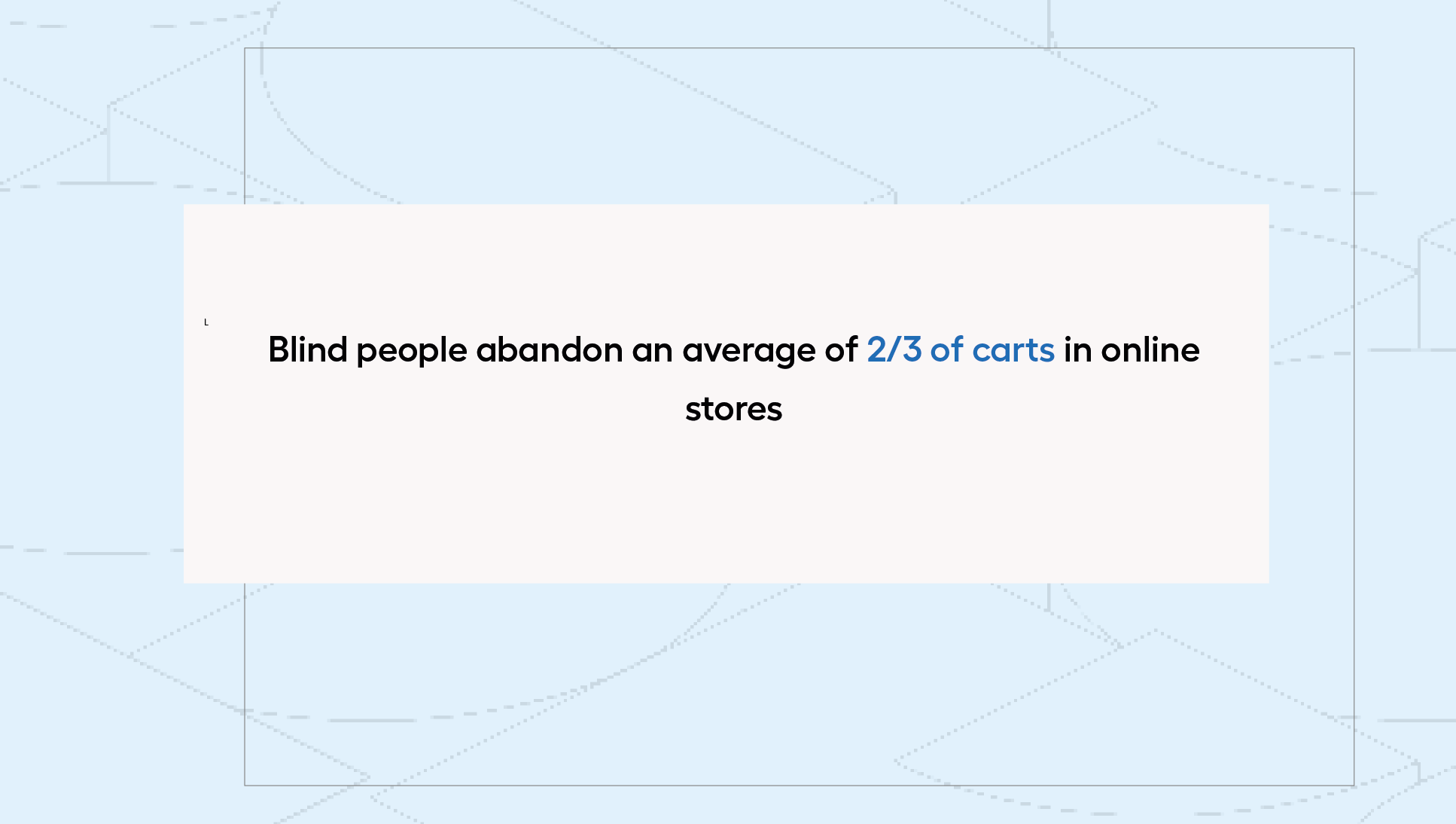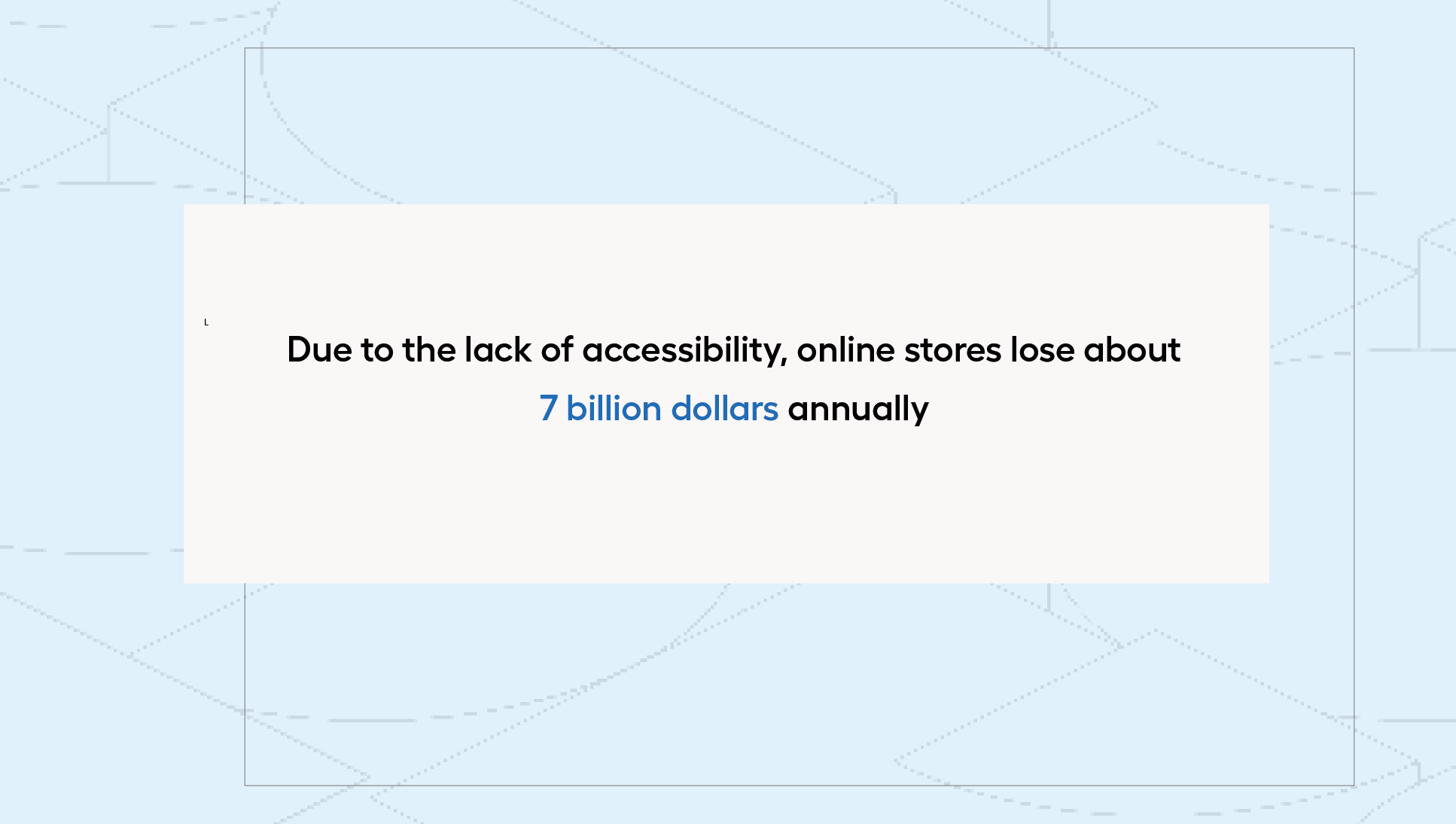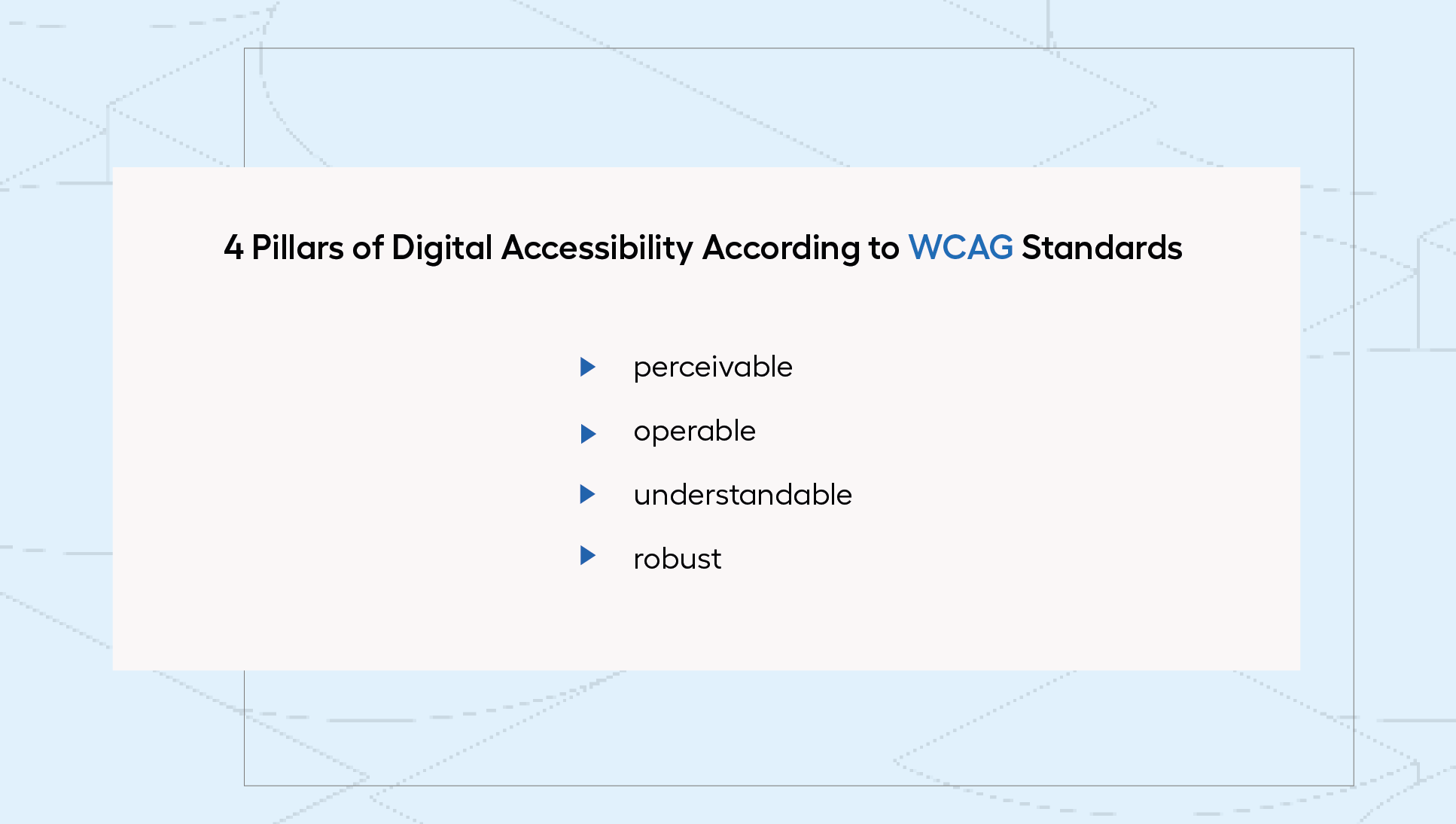Can you imagine a situation where, despite having access to the internet, a computer, or a smartphone, you are unable to use an online store? While such a scenario seems almost impossible, it could affect up to 25% of internet users. This problem arises from the diversity of eCommerce users, who due to various limitations, are unable to fully utilise the functions of traditional sales platforms. How to meet such a challenge? Key in this issue is designing e-stores in accordance with the principles of digital accessibility. Such actions are not only a matter of business strategy but also a legal obligation. Therefore, it is worth considering specific steps that can be taken to make your online store more accessible. Tips for practical actions in this area can be found in this article. Read and check if your store meets accepted standards!
Accessibility - what is it?
Excluding users from the internet is a problem that accessibility helps to solve. This concept refers to designing websites in such a way that they consider and eliminate barriers for diverse users, especially people with disabilities. What exactly does this concept cover?
Digital accessibility in online stores encompasses a wide range of improvements aimed at enabling people with various limitations, such as visual, hearing, mobility, or intellectual disabilities, to use the online platform. Designing pages with accessibility in mind includes, among other things: the ability to adjust the background contrast, adjust text size, add subtitles to video content, or voice control of the site.
 Source: Nucleus Research Report "Internet is unavailable"
Source: Nucleus Research Report "Internet is unavailable"
In the context of the dynamic development of the eCommerce industry, the priority becomes ensuring that websites are accessible to all users, which not only solves the problem of exclusion but also forms a key element of business strategy, increasing the potential number of customers and building a positive brand image.
Why the principles of accessibility in eCommerce metter?
Compliance with accessibility principles in eCommerce is one of the key elements of building social responsibility and an ethical approach to business. First, ensuring access to the full capabilities of the online store for all users (regardless of their individual skills or needs) is fundamental to creating an inclusive environment. Second, it's worth noting that digital accessibility is also a legal obligation for some public entities. The Polish Act on Digital Accessibility of Websites and Mobile Applications and the European Accessibility Act (EU Directive 2019/882) provide clear guidelines for ensuring access to online content for people with various disabilities.
It should also be remembered that meeting accessibility standards also has a practical dimension - it allows expanding the group of buyers and thus increasing the profits of the online store. Accessibility translates into a larger number of potential customers, which can contribute to success both from a business perspective and in building a loyal community. Investing in digital accessibility is therefore not only a process requiring time and resources but also a strategic decision supporting the sustainable development of online business.
 Source: Nucleus Research Report "Internet is unavailable"
Source: Nucleus Research Report "Internet is unavailable"
4 pillars of accessibility of online stores, or WCAG standards
How to ensure that your online store meets the standards of digital accessibility? A useful tool in this context is the WCAG 2.1 document (Web Content Accessibility Guidelines), which establishes universal accessibility standards for all website creators, regardless of their field of activity. The guidelines presented in the publication can be considered the basic "pillars of digital accessibility". What exactly does each of them cover?
WCAG 2.1 precisely defines concepts related to digital accessibility, thereby making it easier for website creators to understand and implement specific steps towards a more accessible online environment. However, it should be emphasised that meeting the WCAG 2.1 guidelines does not automatically guarantee full digital accessibility of the site or application. Digital accessibility, although based on these standards, is a much broader issue, and its boundaries change with technological progress. Therefore, it is key not only to understand and implement the guidelines but also to focus on their central element - the society, for whom accessibility becomes an opportunity to freely use the Internet.
Accessibility in an online store - fundamental principles for eCommerce
WCAG standards are one of the key tools that help in building more accessible and inclusive online spaces. They include 4 basic principles: perceivable,operable, understandable, and robust. Each of these points contains a series of guidelines and tips aimed at improving accessibility in a given area. Curious about the details? Below you will find a brief description of each principle.

Perceivable
Perceivability, as one of the pillars of WCAG standards, focuses on ensuring that the content on the page and interface elements are presented in a way that is easy for every user to receive using their available senses. To ensure this principle in the context of eCommerce, it is important to take several key steps. They include:
- providing text alternatives for graphical elements on the page - each photo or graphic should have an appropriate text description, enabling their understanding, for example, by people using screen readers,
- video transcription - video materials should include subtitles, which is a convenience not only for people with hearing impairments. For example, it can also be beneficial for people who want to watch a movie in places where playing sound is not possible,
- maintaining appropriate contrast - text on the page should be easily readable, regardless of the user's visual abilities. Proper contrasting of text and background colours supports comfortable use of the site by all Internet users.
Implementing text alternatives, video transcription, proper contrast, and other practices such as responsiveness (automatic adjustment of the view to the screen width) are key steps in ensuring perceivability. As a result, the sales platform becomes more accessible to various groups of users, enabling them to freely use its resources, regardless of individual needs or sensory limitations.
 Źródło: Bershka.com
Źródło: Bershka.com
Operable
Functionality according to the Web Content Accessibility Guidelines is ensuring access to various functions of the online store regardless of the method of interaction. Although most users navigate the pages of online stores using a mouse and keyboard (or a smartphone touch screen), there are still differences in preferred and possible methods of operation. Additionally, for people with cognitive limitations, additional time to perform certain actions will also be important, as well as limiting the excess of stimuli while browsing the page (e.g., popping up elements), which can hinder the shopping process.
To ensure functionality, it is worth remembering about:
- the possibility of disabling or stopping moving elements or flashing content on the platform,
- providing appropriate descriptions for links and buttons,
- the option of operating the site solely with a keyboard or another tool (e.g., a voice synthesiser),
- providing an advanced content search or a map of all subpages to facilitate navigation.
Understandable
The WCAG standard, i.e., understandability, focuses on ensuring that users have no problem understanding both how to operate the site and the content on it. To take care of meeting this principle, it is crucial to avoid complicated solutions while ensuring a consistent appearance and functionality of different elements of the site. This can be achieved, for example, by:
- using simple language, eliminating difficult words and specialist terms, and explaining terms that cannot be eliminated,
- precisely determining the language of the page, which will be particularly important for blind and visually impaired users. Such information guarantees the proper functioning of speech synthesisers.
- creating forms on the site containing clear labels, readable messages, and instructions on what to do in case of an error.
- consistent design is also a key element that contributes to the understandability of the site. A uniform appearance makes it easier for users to navigate and understand the structure of the site.
Understandability can be otherwise defined as simplicity, clarity, and consistency of the online environment. Striving for these qualities creates a more accessible and understandable online environment for diverse groups of users, regardless of their abilities or limitations.
Robust
The basic goal of robustness according to WCAG is to ensure that the platform operates correctly and offers the same functionalities regardless of the channels used by users. This principle includes both adaptation to web browsers provided by various suppliers and external devices (e.g., screen readers dedicated to blind people).
To achieve robustness according to WCAG guidelines, creators of websites and mobile applications should adhere to clearly defined web standards, including HTML coding rules. Correct code, adapted to these standards, allows the platform to function smoothly on various devices and in different environments.
An important aspect of compatibility is also the support of assistive technologies. Tools such as a monitor enabling reading using the Braille alphabet or image enlargement programs should be able to transmit and receive messages, as well as correctly display modal windows. This ensures consistency in user experiences, making them equally satisfying for every buyer.
How to improve accessibility in your online store?
To check whether the online store page is properly designed in terms of accessibility, it is worth starting with using free tools such as Sitelmprove. Such platforms allow analysing the site in terms of various aspects of accessibility, providing information about any problems that may affect the user experience. However, to be sure that the site meets all the assumptions of accessibility, it is also worth considering conducting a professional digital accessibility audit of the online store. Such research conducted by specialists will help identify and eliminate any barriers, ensuring full accessibility for all users.
Digital accessibility of the online store - what you need to remember
More and more people are using online stores. Therefore, designing sales platforms in a universal and generally accessible way is becoming increasingly important. However, it is worth remembering that improving accessibility is not a one-time action but a process that contributes to creating a positive brand image and increasing customer loyalty. By implementing digital accessibility principles, online stores not only meet ethical and legal standards but also shape the future



